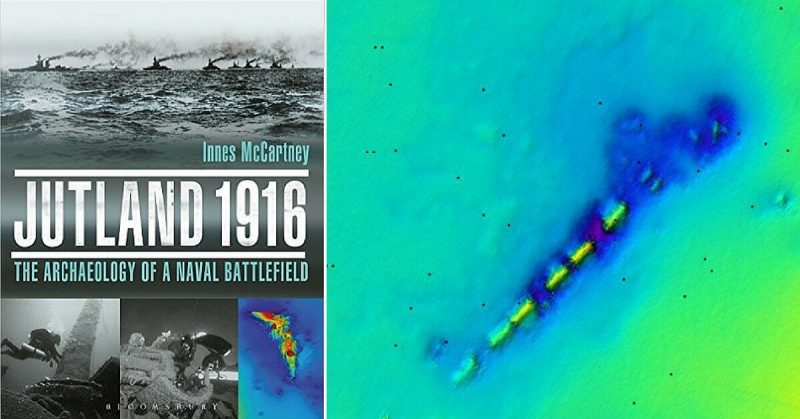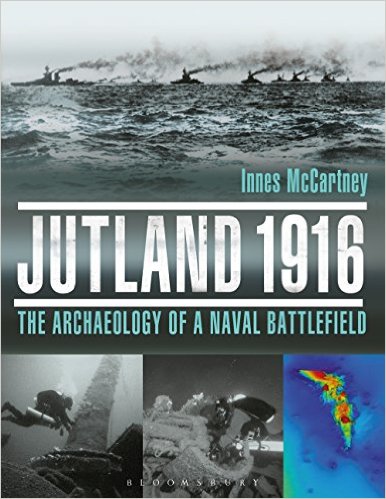A hundred years ago the greatest naval battle of the First World War took place when the British and German fleets clashed in the North Sea at Jutland. The results of the two day battle that began on 31st May 1916 are debated to this day. The fact is the Royal Navy lost more ships and men than the Germans whose intention was to lure the British battlecruisers to their destruction at the hands of the High Seas fleet before the full might of the Jellicoe’s Grand Fleet could intervene. The Germans were desperate to alleviate the effects of the British blockade of their ports and the chance to win a degree of parity with the much bigger enemy fleet was obviously very desirable. The reality is the German plan completely failed and there were moments when things could have gone calamitously wrong for them if the British had been in better positions. But Vice-Admiral Scheer’s luck held and the Germans escaped. The Kaiser’s fleet never offered itself up for significant battle again and it was within the fleet that the revolution that toppled his dynasty began.
Jutland was an immense confrontation and although huge battles took place during World War II between the Americans and Japanese that are just as mind boggling in scale, the notion that over fifty massive capital ships and a couple of hundred other vessels would face off against each other causing so much death and destruction is quite difficult to take in. But it happened. There was the usual mix of courage, error of judgement and tragedy in the affair affecting both sides. It was a battle where the new world of wireless interception and code breaking played a significant part and things might have been very different had key officers not been so disdainful of new science. Anticipation for the clash was keenly felt in both fleets and both sides were hyped up for Der Tag – The Day. Over eight thousand of them would pay the ultimate price. Respect for the men of both fleets who fought at Jutland remains very strong a century on.
There is a fair amount of reading matter on the battle and I have four recent titles to consider on my review pile. My narrative of choice is Steel and Hart’s vivid history recalling the high drama of the grey wastes. This book by Dr Innes McCartney differs in that it moves away from strategic and big picture analysis to concentrate on the fate of the ships lost in the battle; how they were sunk, where they lie and how they fair after a hundred years. Is this important? Well, yes – it is; as the author proves over the course of a thoroughly convincing read.
The North Sea is a battlefield and detailed archaeology as opposed to photo opportunities are the author’s primary motive for doing this book. He looks at accounts of the sinkings and matches them to physical state of the wrecks. He is able to show how accurate the recollections of witnesses were and show the physical aspects of what made the ships go down. He confirms the veracity of many reports and the errors in others. This all seems fairly balanced. Jutland is a battle that does not benefit from a forest of contemporary photography. While there are a number of acknowledged photos there are others that now seem iffy and still more shown to be utterly spurious. With key aspects of the battle fought at night or in poor light, photographs just do not appear to exist. Witness statements of horrific scenes in the midst of battle can be unreliable. Archaeology helps to set the record straight.
A century on many of the wrecks face rapid disintegration as their metal structures flake away and there have been persistent instances of illicit salvage. The author explains how British official attitudes to this have been inconsistent at best. We live in an age of heightened sentimentality (just wait for the 1st of July) and there is a palpably emotive connection with men of the Great War felt or promoted in many corners. That this could apply to the lost communities at the bottom of the North Sea is easy to construct, for ships were living things rather than just metal monsters. Action to protect ships as war graves or just for what they were and are today should be led by government. Maybe it will happen. It’s all academic in real terms because these wrecks belong to the sea first and foremost and it will win. Dr McCartney is correct to say that in another century there will be next to nothing left of the ships that fought and died at Jutland whatever men decide on committees or in lobbies. The Jutland wrecks need to be thoroughly surveyed to help place solid fact above interpretation and conjecture.
Jutland was an awe inspiring clash of titans fought by incredible men in stupendous ships we could not replicate today. The battle had its share of folk heroes and some may well be trotted out by the media this month, perhaps none more so than the sixteen-year-old lad Jack Cornwell who was awarded a posthumous Victoria Cross. Another participant was the young Prince Albert, who, as King George VI is the last British monarch to have fought in a battle. Jack Cornwell’s epitaph reads “It is not wealth or ancestry but honourable conduct and noble disposition that maketh man great.” How true.
This is a fantastic book. I rattled through it and love all the detail. Dr McCartney helps to prolong the lives of ships lost in the battle rather than consign them to dimly remembered death. He salutes the few people seeking to conserve the memory of the Jutland wrecks for the living fighting ships they once were. Archaeology of 20th century battlefields on land is now well established. This book takes strides in reminding us that there is much, much more to learn about the Great War and more recent trauma at the bottom of the sea. In some cases it is just a tantalising sixty odd metres down.
The mix of contemporary and modern photography fit together nicely. The colourful scans of shipwrecks take me back to my son covering the carpet in Lego twenty years ago. That he finds time these days to become immersed in the great ships of the Jutland era seems pretty cool when I think about it. For me the package would have worked even better in a slightly larger format where it would have enhanced the impact of the dive images which get a little lost. I had difficulty with fonts and background colours on some of the captions.
This book gives us an alternative perspective of the immense skill that went into the construction of wonderful ships and the brilliant engineers of a vanished age. It shows us the ingenuity of our destructive ways and the harsh reality of naval conflict a century ago. Dr McCartney insures none of the awe for stupendous sea power or respect for those amazing men of 1916 is lost. Like old soldiers the shipwrecks of Jutland will assuredly fade away. Freezing them in time for the sake of knowledge and posterity is to be encouraged. Men die and ships rust, but the magnitude of the Battle of Jutland is here to stay.
Reviewed by Mark Barnes for War History Online.
JUTLAND 1916
The Archaeology of a Naval Battlefield
By Innes McCartney
Bloomsbury Publishing
ISBN: 978 1 84486 416 4

